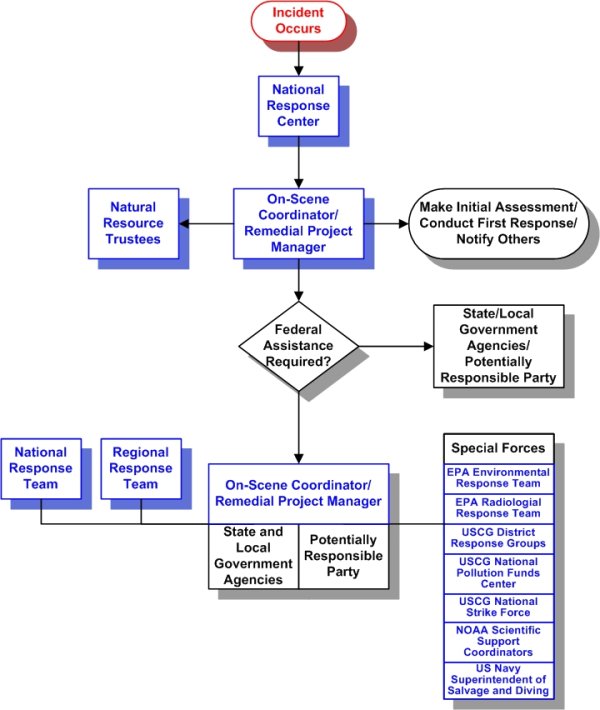National Response System
The National Response System (NRS) is a mechanism routinely and effectively used to respond to a wide range of oil and hazardous substance releases. It is a multi-layered system involving individuals and teams from tribal, local, state, and federal agencies, as well as industry and other organizations. These groups share expertise and resources to ensure that response and cleanup activities are timely, efficient, and minimize threats to human health and the environment.
At the heart of the system is the National Oil and Hazardous Substances Pollution Contingency Plan (NCP). The NCP outlines the process to ensure that the federal government’s resources and expertise are available immediately for response actions that are beyond the capabilities of local and state responders. The NCP provides the framework for the NRS and establishes how it works.
When large scale incidents occur, such as a hurricane or earthquake, other federal resources support the response under the National Response Framework (NRF) which works in conjunction with the NRS and NCP. The NRF is the federal government's comprehensive, all-hazard approach to crisis management. It also provides a mechanism for coordinating federal assistance to tribal, local and state governments.
Other components of EPA's response structure include the National Response Center and the National Response Team.
National Response System Flowchart
The flowchart below shows how the National Response System functions.
- When a release or spill of oil or a regulated hazardous material occurs, the organization responsible for the release or spill is required by law to notify the National Response Center (NRC).
- Once a report is made, the NRC immediately notifies a designated On-Scene Coordinator (OSC) in the impacted region as well as tribal, local and state emergency personnel.
- The OSC coordinates with the state, other personnel on site, and the Potentially Responsible Party (responsible for the release or spill) to determine the status of the response.
- The OSC determines whether, or how much, federal involvement is necessary and deploys the needed resources.
The OSC may request additional support to respond to a release or spill, such as: additional contractors, technical support from EPA's Environmental Response Team, or Scientific Support Coordinators from EPA or the National Oceanic and Atmospheric Administration. The OSC may also coordinate with the Regional Response Team (RRT) to access special expertise or to provide additional logistical support. In addition, the National Response Team stands ready to provide policy and logistical support to the OSC and the RRT during an incident.
For more information, please see Responding to an Incident.

